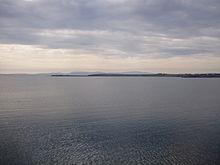

A treaty with the small but growing naval power of Japan in 1902 gave Britain an ally to counter German colonial ambitions in the Far East. The alteration in the balance of power caused by the naval race, however, did much to end British noninvolvement in European affairs - and not to Germany’s advantage. The Germans also seriously misjudged the industrial might available to Britain and her empire as well as the natural advantage of her centuries of naval experience.īritain had long mistrusted Germany but was willing to accept her as the foremost land power on the Continent. France was also ruled out, because of her centuries of rivalry with Britain - and because of her alliance with Russia. They assumed that Britain and Russia, who had opposing interests in the Far East, would never work together. Wilhelm and Tirpitz, however, had not bargained on Britain’s determination to maintain that dominance, nor did they give weighty consideration to what might happen if Britain were aroused from her traditional isolation from Continental affairs. The new docks constructed in Germany were more up-to-date, allowing for the construction of larger-beamed and stronger warships.Īnd so Germany embarked on a course to end more than a century of naval supremacy Britain had enjoyed since the days of Horatio Nelson. In Britain, ships had to be designed and built within the limiting dimensions of existing docks. Although Tirpitz did not name Britain in his discourse, there could be no doubt that she was the rival naval power to which he referred.Ĭonstructing the navy that the kaiser and Tirpitz desired was an immense task, although starting from scratch did have its advantages. Therefore, the mere existence of a powerful fleet would give Germany a degree of control over her rival.

Tirpitz put forward his ‘risk theory,’ arguing that it was not necessary for the German fleet to defeat a rival power in battle but simply to be capable of inflicting enough serious damage to cripple or disrupt the enemy’s supremacy at sea. With the old chancellor’s restraining hand gone, the kaiser turned his attention to realizing his great dream of a powerful navy - a dream for which Tirpitz became the chief architect.

Then, in 1890, the young Kaiser Wilhelm II, who had been on the throne for barely a year, forced Bismarck to resign. Crown Prince Wilhelm and the ‘Iron Chancellor’ soon clashed over their nation’s geopolitical role. Germany’s future, he concluded, logically lay on the European continent, guarded by the most modern army in the world. When Chancellor Otto von Bismarck forged a united German nation in 1871, he saw no use for a large navy. To build such a colonial and commercial empire required a deep-water fleet, capable of fighting full-scale battles anywhere on the globe. Wilhelm also had visions of a German empire that extended overseas, like those of Britain and France. He had been consumed with envy when he attended his grandmother Queen Victoria’s review of the Royal Navy during the celebration of her Golden Jubilee in 1887. The document might have been merely filed and forgotten, had it not come to the attention of Kaiser Wilhelm II. Its creator was Captain Alfred von Tirpitz, who in 1894 wrote a thesis for the Naval Supreme Command, in which he argued for a strong fleet. Between 18, a sudden surge of shipbuilding fervor expanded the Imperial German Navy from a largely coastal force to the second largest fleet in the world, equipped with some of the finest warships afloat. The fleet that died by its own hand on that first summer day of 1919 was the product of one of history’s greatest strategic blunders. Just a few fathoms below Scapa Flow’s dark surface lie the remains of another navy: four battleships and four light cruisers of the Imperial German High Seas Fleet, scuttled by their own crews 80 years ago this month in the largest act of self-destruction in naval history. But in its glory days, the Flow served as the main base for Britain’s battle fleet during two world wars. The area is largely deserted today, apart from the odd oil tanker serving North Sea oil rigs or, every two or three years, warships of the North Atlantic Treaty Organization meeting to conduct a joint exercise. In the middle of the seven islands of Orkney is the large natural anchorage known as Scapa Flow. The Orkney Islands lie seven miles northeast of the town of John O’Groats, Scotland, separated from the mainland by the Pentland Firth. World War I: German Battleships Scuttled at Scapa Flow Close


 0 kommentar(er)
0 kommentar(er)
